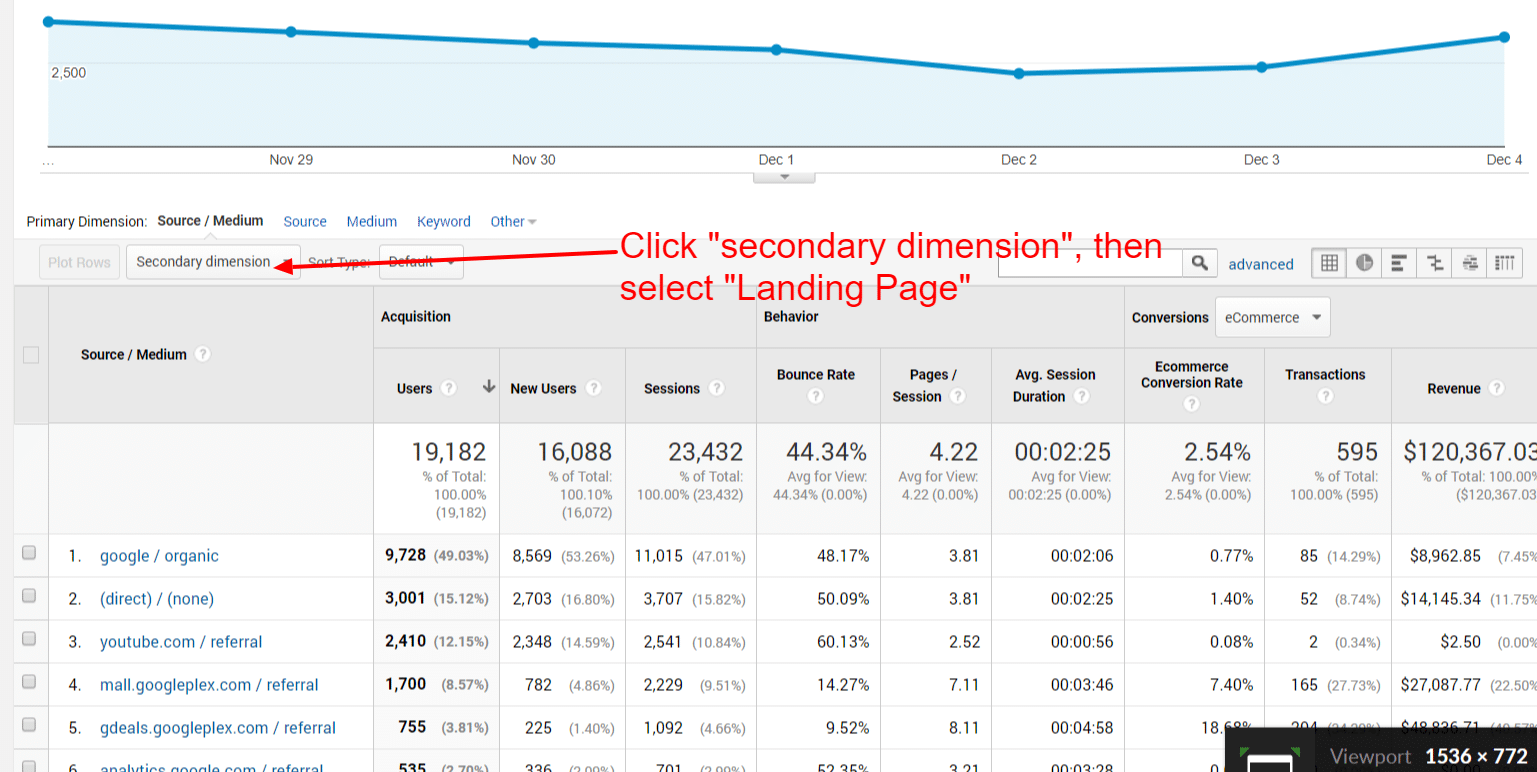Maximizing Search Engine Optimization with Secondary Dimension in Google Analytics
Wiki Article
Enhance Your Information Evaluation Utilizing Secondary Measurement in Google Analytics
Exploring the capabilities of secondary measurements in Google Analytics opens a realm of possibilities for refining information analysis. The capability to dissect details additionally past the surface area degree presents a nuanced view that can shape calculated choices. By layering additional dimensions onto primary data sets, an even more complex narrative emerges, shedding light on customer interactions and efficiency indications. This dynamic strategy to information exam holds the vital to unlocking surprise patterns and patterns that could change just how businesses analyze their digital impact.Recognizing Additional Measurements
Secondary measurements in Google Analytics refer to extra specifications that can be added to the main measurement, permitting for a more comprehensive analysis of information (Secondary Dimension in Google Analytics). By incorporating additional dimensions, analysts can sector and filter information to uncover patterns, fads, and correlations that may not be evident when looking at the information as a whole.
Benefits of Making Use Of Secondary Dimensions
When analyzing data in Google Analytics, the utilization of secondary dimensions supplies vital understandings into individual habits and performance metrics. By including a second measurement to your main data, you can delve deeper right into the characteristics of your website visitors and their interactions.
Additionally, second measurements improve the context of your key data, giving a more thorough sight of customer engagement and performance metrics. Generally, the use of second dimensions in Google Analytics can dramatically improve the depth and top quality of your information analysis, leading to more enlightened decision-making and boosted end results.
Just How to Include Additional Dimensions
By integrating second dimensions in Google Analytics, users can obtain deeper insights right into their information analysis procedure, permitting for more detailed assessment of individual actions and efficiency metrics. Adding additional measurements is an uncomplicated process that can considerably enhance the depth of analysis. Once in the report, find the "Additional dimension" tab over the information table.Studying Information With Secondary Measurements
Utilizing a knockout post additional measurements in information evaluation supplies a more comprehensive understanding of individual habits and efficiency metrics. By adding a second dimension to your primary information embeded in Google Analytics, you find out can delve deeper into the qualities of your site visitors and their communications. As an example, combining the main measurement of 'source/medium' with the additional dimension of 'landing page' can expose which particular pages are attracting traffic from various resources, helping you enhance these web pages for far better engagement.
Essentially, evaluating data with additional measurements encourages you to get useful insights right into customer behavior, recognize patterns, and make informed decisions to boost the efficiency of your digital homes.
Ideal Practices for Secondary Dimensions
In information evaluation, integrating second dimensions effectively can substantially improve the deepness of insights acquired from metrics and individual behavior patterns. When using secondary dimensions in Google Analytics or any type of other analytical tool, it is crucial to abide by best methods to guarantee the precision you can try these out and importance of the data analysis.One trick finest practice is to meticulously select additional dimensions that match the key dimension being examined. Selecting second dimensions that provide extra context or further segmentation can use a more detailed understanding of the data. It is likewise important to avoid overcomplicating the analysis by consisting of a lot of additional dimensions, which might bring about confusion or dilution of insights.
Additionally, it is suggested to experiment with different combinations of key and secondary dimensions to reveal brand-new correlations and trends. Routinely examining and improving the option of additional measurements based on the certain objectives of the evaluation can bring about more actionable insights. By complying with these finest techniques, data analysts can leverage second measurements successfully to improve the general data evaluation procedure and decision-making capacities.

Conclusion
To conclude, including second measurements in Google Analytics is vital for a thorough data analysis approach. By leveraging second dimensions alongside primary ones, experts and marketing experts can discover useful insights and relationships that can educate decision-making and enhance digital advertising approaches. Recognizing exactly how to successfully use additional dimensions and complying with best practices will certainly enable professionals to draw out purposeful information and improve their total performance metrics.Secondary measurements in Google Analytics refer to added parameters that can be included to the primary measurement, enabling for an extra in-depth analysis of data. By integrating additional dimensions, experts can section and filter data to reveal patterns, fads, and connections that might not be apparent when looking at the information as a whole. Incorporating the main measurement of 'source/medium' with the additional dimension of 'landing page' can disclose which particular web pages are drawing in traffic from different resources, helping you enhance these pages for much better engagement.
One trick best technique is to thoroughly choose secondary measurements that match the primary measurement being assessed. By complying with these best practices, data experts can leverage second dimensions successfully to enhance the total data evaluation procedure and decision-making capacities.
Report this wiki page